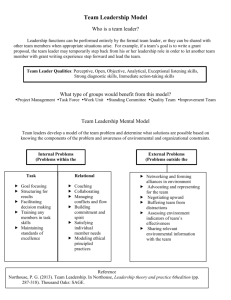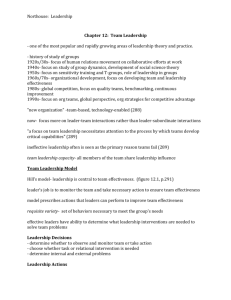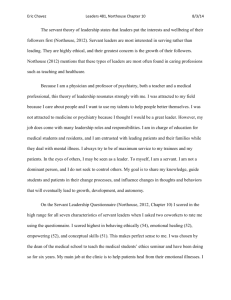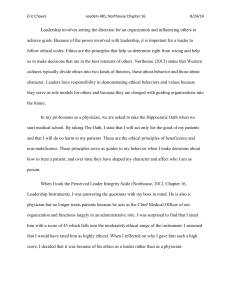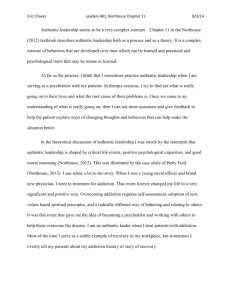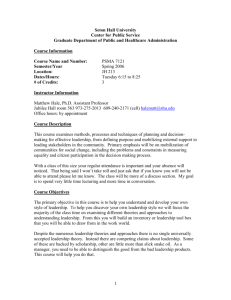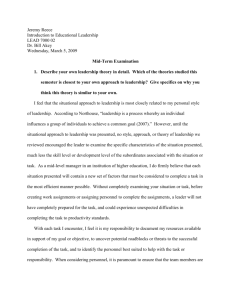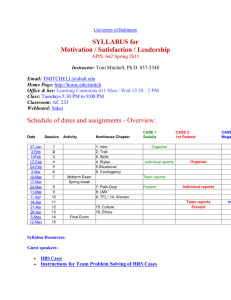File
advertisement
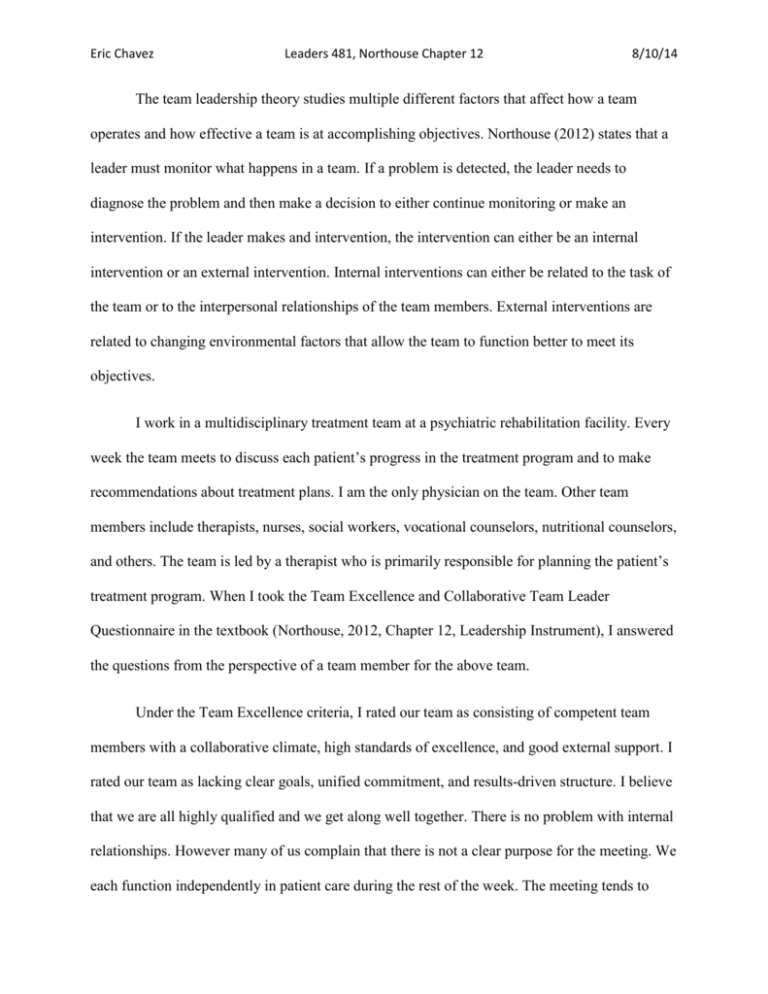
Eric Chavez Leaders 481, Northouse Chapter 12 8/10/14 The team leadership theory studies multiple different factors that affect how a team operates and how effective a team is at accomplishing objectives. Northouse (2012) states that a leader must monitor what happens in a team. If a problem is detected, the leader needs to diagnose the problem and then make a decision to either continue monitoring or make an intervention. If the leader makes and intervention, the intervention can either be an internal intervention or an external intervention. Internal interventions can either be related to the task of the team or to the interpersonal relationships of the team members. External interventions are related to changing environmental factors that allow the team to function better to meet its objectives. I work in a multidisciplinary treatment team at a psychiatric rehabilitation facility. Every week the team meets to discuss each patient’s progress in the treatment program and to make recommendations about treatment plans. I am the only physician on the team. Other team members include therapists, nurses, social workers, vocational counselors, nutritional counselors, and others. The team is led by a therapist who is primarily responsible for planning the patient’s treatment program. When I took the Team Excellence and Collaborative Team Leader Questionnaire in the textbook (Northouse, 2012, Chapter 12, Leadership Instrument), I answered the questions from the perspective of a team member for the above team. Under the Team Excellence criteria, I rated our team as consisting of competent team members with a collaborative climate, high standards of excellence, and good external support. I rated our team as lacking clear goals, unified commitment, and results-driven structure. I believe that we are all highly qualified and we get along well together. There is no problem with internal relationships. However many of us complain that there is not a clear purpose for the meeting. We each function independently in patient care during the rest of the week. The meeting tends to Eric Chavez Leaders 481, Northouse Chapter 12 8/10/14 seem redundant in that we are discussing patient care items that have already been discussed or acted upon in other settings previously in the week. Team members lack a commitment to the group because we have no tangible results from the meeting. Under the Collaborative Team Leadership criteria, I rated the team leader as technically experienced, good at building confidence for individual team members, and good at maintaining a collaborative climate. However, the leader lacks focus on a goal, does not set priorities, and does not manage the performance of team members. According to the Team Leadership Theory in the textbook, the team leader should be monitoring for problems and may need to take action steps to correct the problems (Northouse, 2012). If I were the leader of this group I would make a diagnosis that the group is suffering from an internal task problem. I would choose to intervene internally by discussing the purpose of the meeting and working with the team to set specific goals and objectives for each meeting. The team needs a clear goal and a results-driven structure. When the goal is set, commitment may improve because each team member will feel surer about their role and how they can contribute to the team. We will start to think of ourselves as accomplishing something rather than just reviewing data that has already been discussed and acted upon. Eric Chavez Leaders 481, Northouse Chapter 12 8/10/14 Reference: Northouse, P (2012). Leadership: Theory and Practice [Kindle for iPad version 4.3]. Retrieved from Amazon.com
